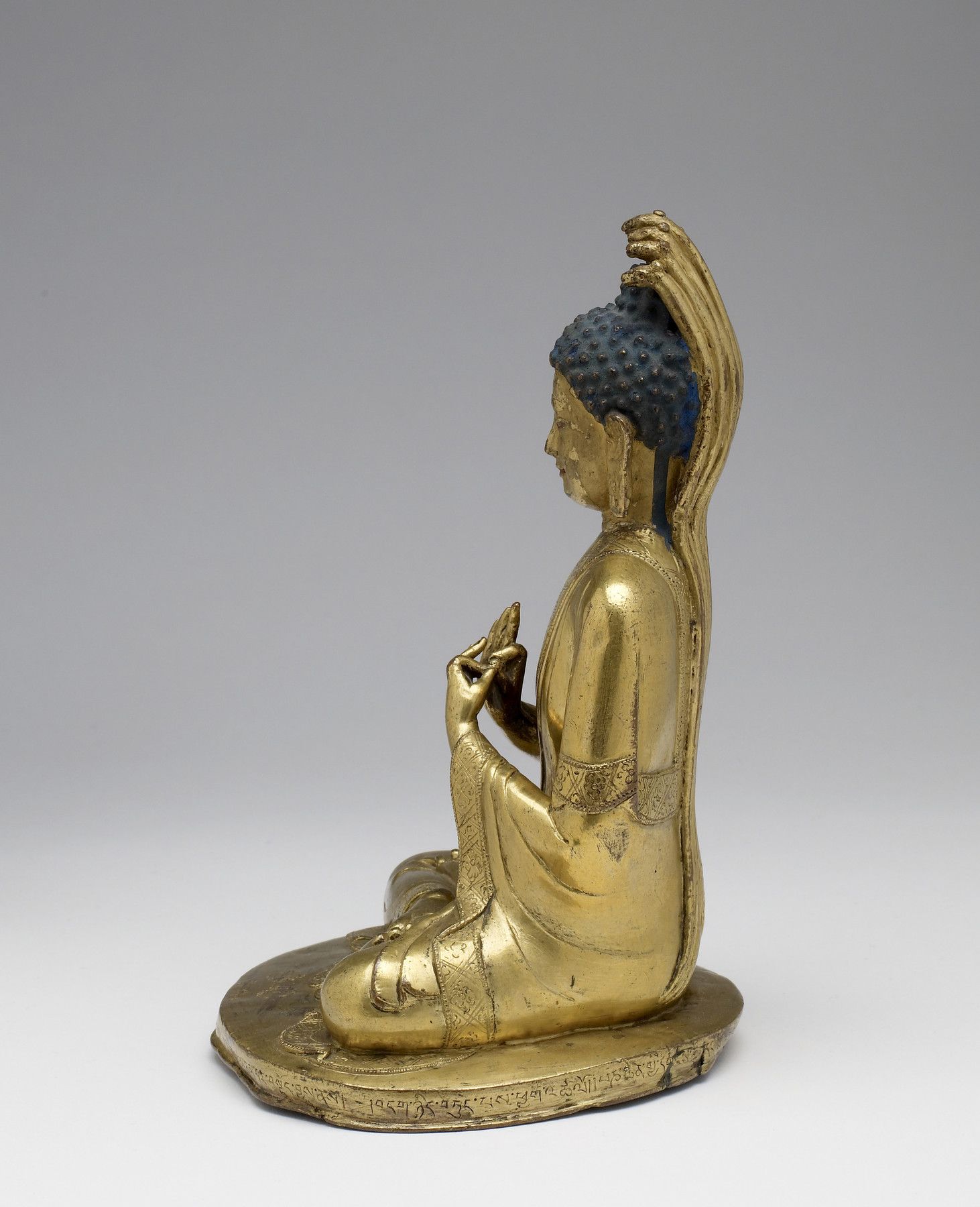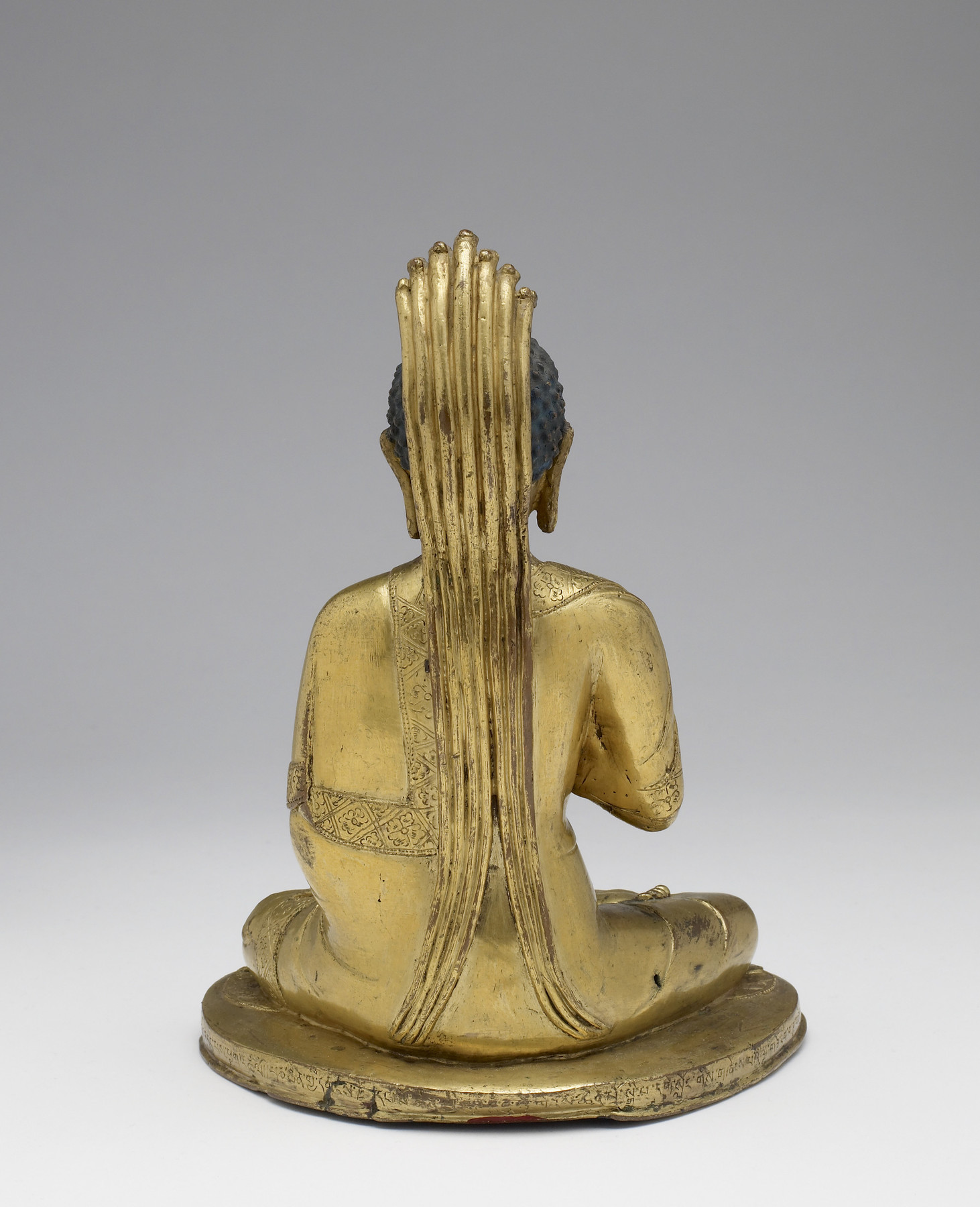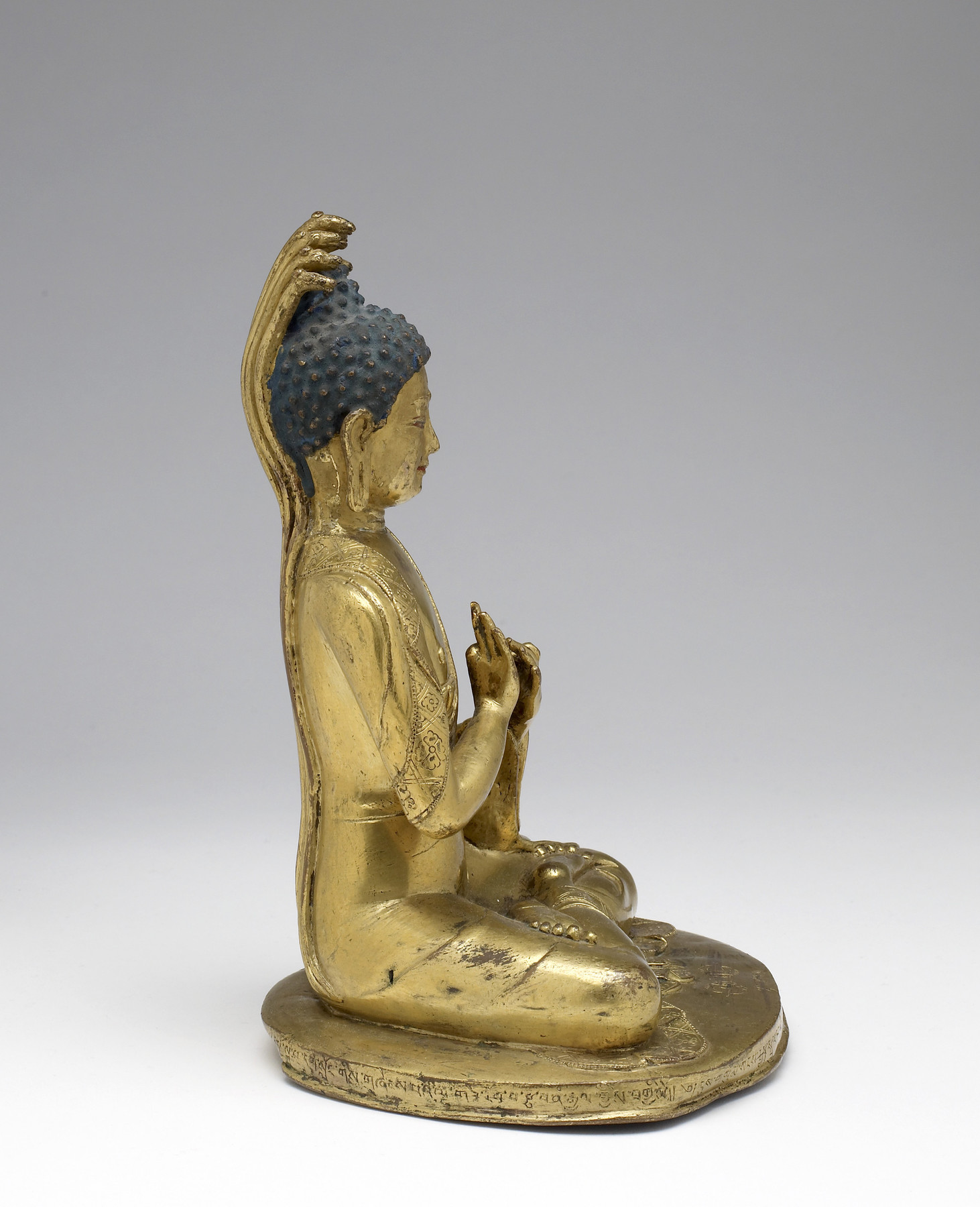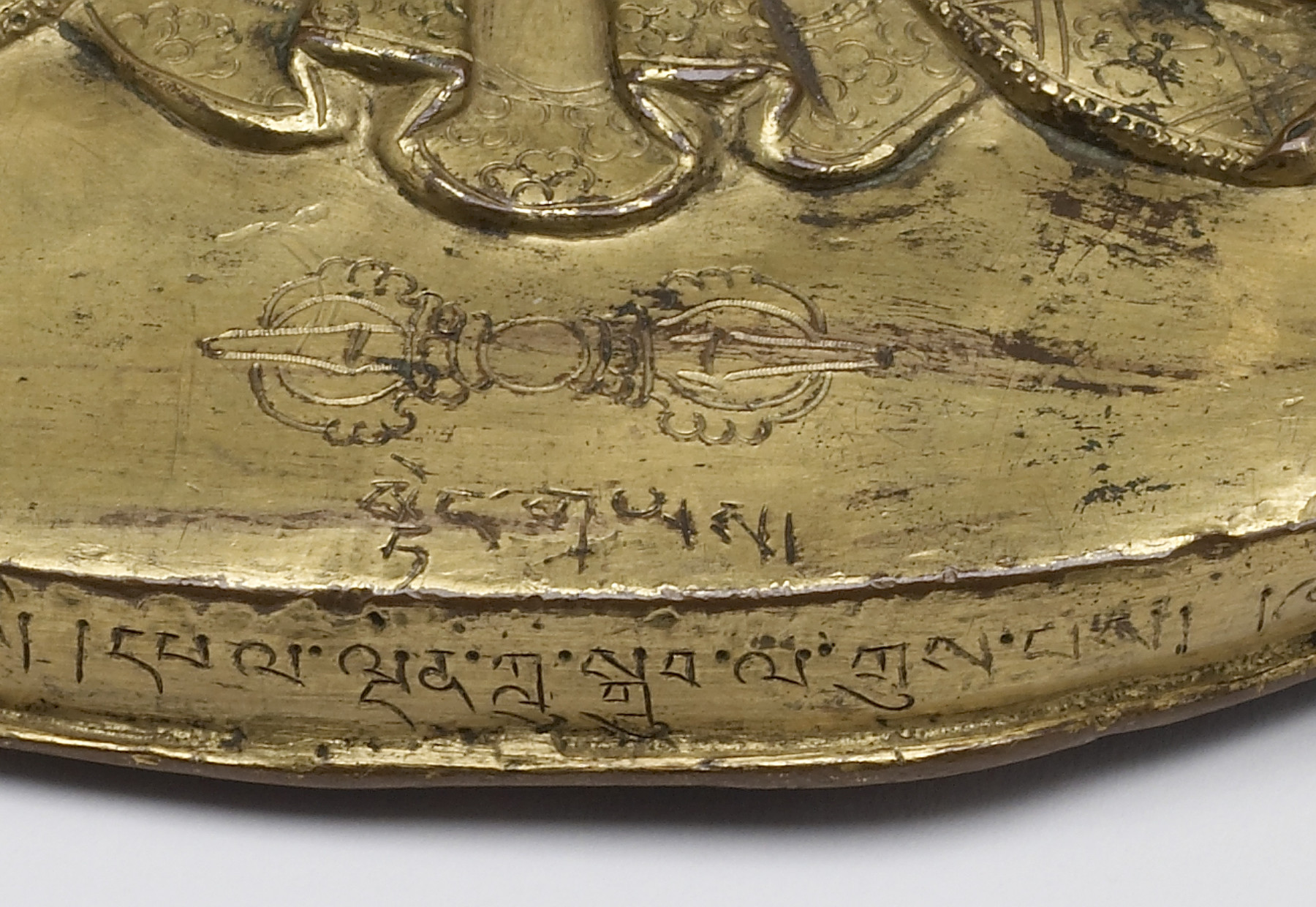Buddhist Teacher and Philosopher Nagarjuna
(India, Nepal, and Tibet)
At first glance, this figure appears to be a Buddha, but the seven-hooded serpent ("naga") above his head identifies him as Nagarjuna, a second-century philosopher from southern India who came to be known as a second Buddha. According to tradition, Nagarjuna retrieved a sacred "Perfection of Wisdom" text from the underwater kingdom of the serpent king, to whom the Buddha had entrusted it. A prominent teacher, Nagarjuna holds his hands in the gesture of teaching known as "dharmachakra mudra": Using the thumb and index finger of each hand to form a "wheel" ("chakra") symbolic of Buddhist doctrine ("dharma"), he propagates the Buddhist teachings by setting that wheel in motion.
In later centuries, other philosophers and teachers named Nagarjuna rose to prominence. Tibetan Buddhist tradition conflated them with the second-century Nagarjuna, who is considered to be a "mahasiddha," a "great perfected one" whose superior wisdom endows him with extraordinary powers. The inscription on the base of this sculpture calls Nagarjuna by his Tibetan name, Ludrub, and states that it was made by the sculptor Tsapa Namgyal for an unnamed senior monk.
Provenance
Provenance (from the French provenir, 'to come from/forth') is the chronology of the ownership, custody, or location of a historical object. Learn more about provenance at the Walters.
John and Berthe Ford, Baltimore; given to Walters Art Museum, 2002.
Geographies
Tibet (Place of Origin)
Measurements
H: 9 1/8 × W: 6 5/8 × D: 5 7/8 in. (23.1 × 16.8 × 15 cm)
Credit Line
Gift of John and Berthe Ford, 2002
Accession Number
In libraries, galleries, museums, and archives, an accession number is a unique identifier assigned to each object in the collection.
In libraries, galleries, museums, and archives, an accession number is a unique identifier assigned to each object in the collection.
54.3008




















